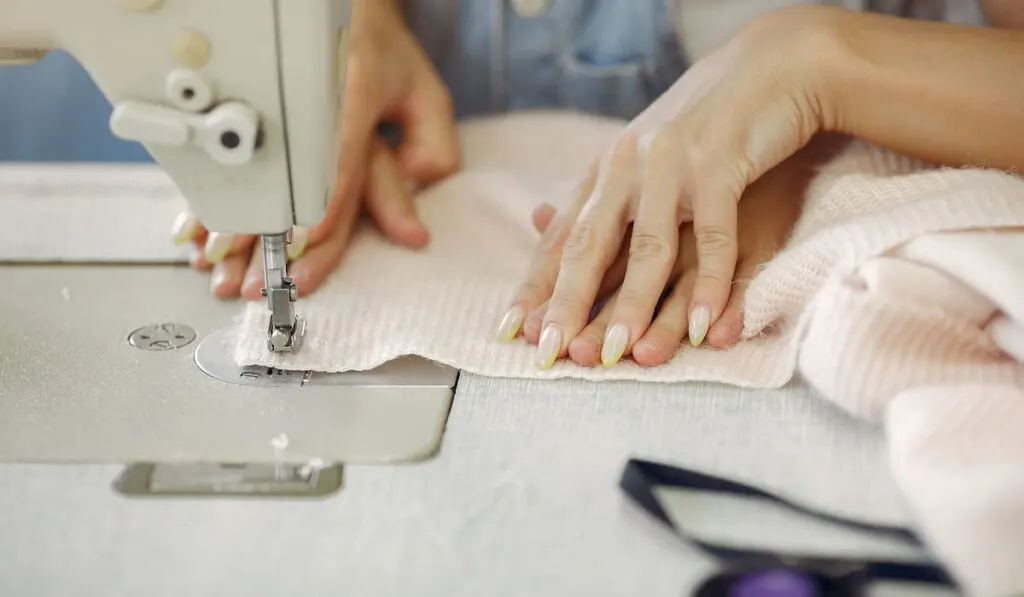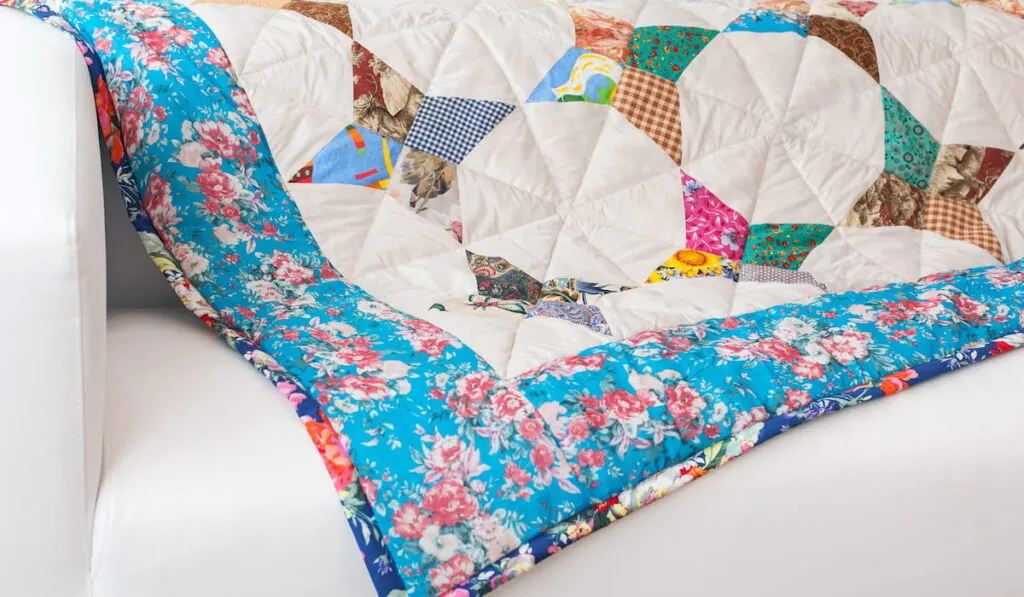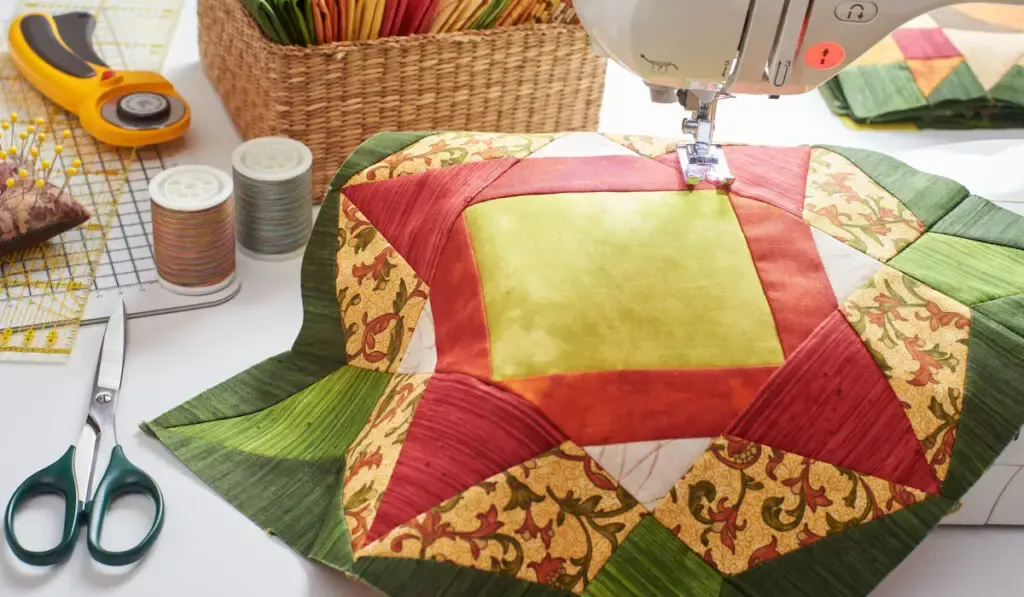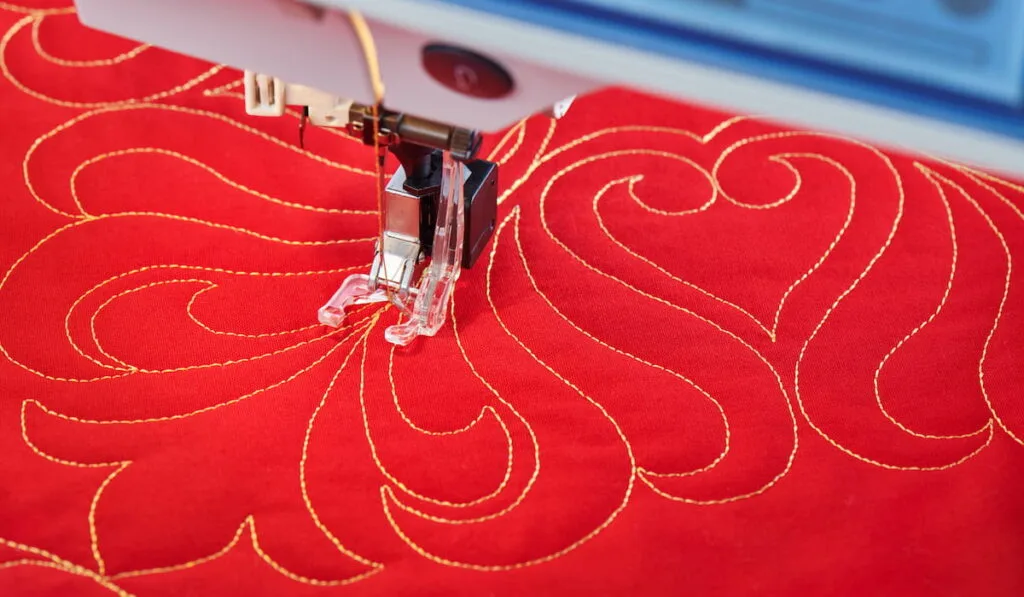So, you are looking to get into making fabric crafts. You have considered all the options available, from knitting and crocheting to sewing and quilting, and you’ve narrowed your choices down to two. But now, you can’t seem to make a choice between them, leaving you with a lingering question: quilting vs. sewing, which one is better?
Quilting vs. sewing, which one is better?
Quilting and sewing serve different purposes, so it is hard to compare them directly to know which is better.
However, if you compare the various aspects of quilting and sewing, you may find what makes one better for you than the other.
For one, if you prefer simple processes, you may enjoy sewing over quilting.

To give you more clarity to choose the better option for you, we discuss and compare the various aspects of quilting and sewing in this article. Check them out and choose the better one yourself.
Quilting vs. Sewing
To compare quilting and sewing, we discuss the various aspects of each one below:
Processes
While quilting is a form of sewing, its techniques and steps differ from sewing. In other words, the processes of quilting and sewing are significantly different.
Sewing typically involves stitching to join pieces of fabrics into a predetermined design. It also involves pattern making, alterations, and fabric cutting.
Like sewing, quilting also involves stitching and fabric cutting. However, the processes in quilting are a bit more specific. Besides the steps it shares with sewing, quilting also involves design creation, layering, binding, appliqueing, and basting.
Basting involves using adhesive or temporary stitches to stabilize the quilt and prevent distortion. Appliqueing involves sewing fabric pieces atop the quilt to create elegant designs. Then binding involves sewing fabric around the edges of a completed quilt for extra durability.
Layering
Quilting involves a step called layering, but sewing does not. While sewing basically involves joining two pieces of fabric together with thread and needles, quilting is a bit more complex.
Quilts have 3 layers, so quilting basically involves joining these 3 layers together. The first/top quilt layer is the design layer made from sewing several pieces of fabric together. The second layer (the middle or batting layer) contains fabric that provides insulation in the quilt. It also gives the quilt a puffy design. Then the final layer is the backing. The backing may be one large piece of fabric or multiple fabric pieces sewn together.

Purpose
The primary difference between quilting and sewing is their purpose. The purpose of sewing is to make clothing items and accessories.
In other words, when you sew, you can make things like skirts, shirts, decorative clothing, toys, and much more.
On the other hand, the purpose of quilting is to make quilts. Basically, all you can make by quilting is a layered piece of bed covering.
Machine
In earlier times, you could only quilt and sew by hand. But these days, you can either use your hands or work with a machine. Of course, these days people use machines more times than not. You can sew and quilt with a sewing machine or a quilting machine. However, the components of a sewing machine differ from a quilting machine.
Generally, quilting machines have more add-ons than sewing machines. They offer high-impact performance and are better for quilts than sewing machines.
Warm Lining/Insulation
As previously mentioned, quilting has 3 layers, and of these 3 layers, the middle layer provides insulation/ a warm lining. While people commonly use batting for the warm lining of a quilt, you can use fleece and flannel.
Sewing does not need a middle layer for insulation. So, unlike quilting, it does not provide extra warmth.
Thread Type
People typically quilt with cotton thread because it holds quilts together without getting in the way. This is possible thanks to the fine yet durable texture of cotton threads.
With sewing, you can use virtually any thread type. You can use polyester, wool, cotton, silk, and heavy-duty threads.
Of course, the thread you use in sewing largely depends on the fabric type and project you are working on.
Which Is Better?
- As we said before, the better option between quilting and sewing depends on what you want. However, we can tell you that quilting is better than sewing if you intend to make a quilt.
- Sewing is the better option if you do not want to limit your creativity to quilts.
- If you are trying to make a bed cover or blanket, and you have no need for extra warmth, sewing offers a simpler process.
- Also, if you have a sewing machine and no quilting machine, sewing might be the better option for you. Quilting machines come with add-ons that produce better quilts than sewing machines. So, without a quilting machine, your quilt may not be as good as you want it to be.
- With sewing, your choice of thread is a bit flexible. But more times than not, quilters use cotton thread.
Can You Do Both?
You can do both sewing and quilting. In fact, since quilting is a type of sewing, you sew whenever you quilt.
Quilting Machine vs. Sewing Machine

There are more differences between quilting and sewing machines than we highlighted above. So, below, we will discuss more differences between both types of machines.
Before discussing the differences between quilting machines and sewing machines, we should mention that quilting machine is a bit of a misnomer.
Quilting machines are basically sewing machines with extra features for quilting. Now that that is out of the way, quilting machines differ from sewing machines in the following ways:
Stitches Per Minute
Quilting machines can create more stitches per minute compared to sewing machines. In other words, you can make quilts faster with a quilting machine than a sewing machine.
While a quilting machine can create up to 1600 stitches per minute, a sewing machine only makes around 800-1100 stitches per minute. So, if you want to get through quilting projects (especially the binding process) faster, you should get a quilting machine.
The speed of a quilting machine would also be helpful if you quilt professionally. If you get through more projects quicker, you can create more quilts in less time and earn more. Since quilting machines work faster than sewing machines, manufacturers ensure their motors are more durable. So, you do not only enjoy speed with a quilting machine, but you also get extra durability.
Extension Table
Quilting typically involves joining many pieces of fabric together. So, you will need a large area on the machine to work with ease. In fact, for larger projects like queen-size quilts, you will even need more space than usual for a smooth flow.
For this reason, some manufacturers include an extension table in their quilting machines. Some manufacturers who do not include an extension table in their quilting machines offer you the option to get one as an add-on. Extension tables may not be vital in a quilting machine, but they make quilting easy.
While quilting machines may come with an extension table, sewing machines usually don’t. However, you can get one as an add-on for your sewing machine.
Number of Built-In Stitches
Quilting machines typically have more built-in stitches than regular sewing machines. In some cases, a quilting machine can have as many as 200 inbuilt stitches.

Throat Size
Consolidating what we said earlier about quilting needing a large area for smooth flow, quilting machines may come with a larger throat size than regular sewing machines. This is understandable since quilt projects can be bulky. Generally, when buying a quilting machine, the longer the throat, the better. So, when you go shopping, look for a throat size of at least 8 inches.
Foot Accessories
While both quilting and sewing machines have various foot accessories, some quilting foot accessories are quilting-specific. Such accessories include:
Free-Motion or Darning Foot
As the name implies, free-motion foot allows you to stitch quilts while moving the fabric in any direction. You can think of it as a way to make free-hand stitching on a machine. One of the upsides of the darning foot is the chances of injuring your finger with the needle are lower. Apart from that, you are less likely to have puckering or skipped stitches.
All in all, the free-motion or darning foot is an essential accessory. You will benefit a whole lot if it comes with your quilting machine.
Quarter-Inch Foot
The usual seam allowance you need when quilting is a quarter inch. Thankfully, the quarter-inch foot allows you to create this allowance seamlessly.
Walking Foot
The walking foot offers some ease when feeding through a quilt’s thick layers. It acts as an extra set of feed dogs, easing the top layer of the quilt through the quilting machine. Walking foot makes quilting in a straight line uncomplicated.
Final Thoughts
Since sewing and quilting serve different purposes, none is factually better than the other. However, sewing is better if you want an uncomplicated process with some flexibility.
On the other hand, if you have a quilting machine and want to make quilts, quilting is better.
Resources
- https://ironinglab.com/quilting-vs-sewing/
- https://crafttribeonline.com/sewing-vs-quilting-5-differences-that-matter/
- https://sewingmachinebuffs.com/differences-between-sewing-and-quilting/
- https://www.blog.stitchinheaven.com/post/quilting-vs-sewing
- https://www.businessinsider.com/guides/learning/best-sewing-machine
